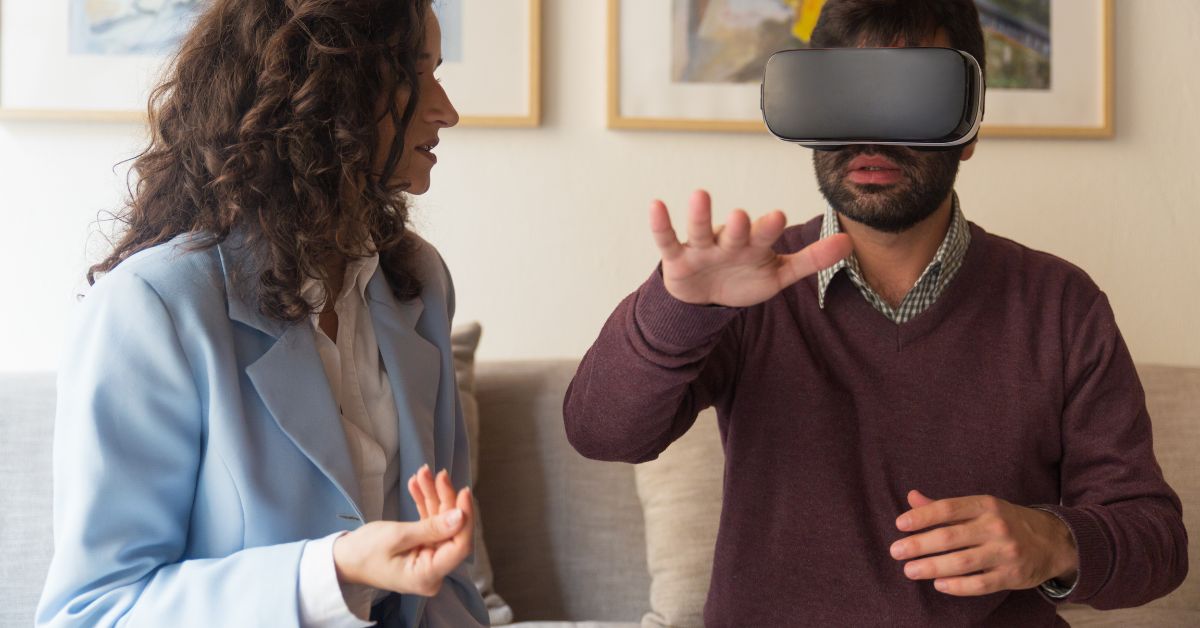In the eyes of typical users, technology exists solely based on what they perceive with their eyes.
The experience of blind users, however, depends entirely on what they feel, through their sense of touch.
Over the last few years, the world has become more accessible to visually impaired users because of haptic technology, which transmits information through vibrations, pressure, and movement.
Touch-based feedback in technological interfaces assists blind users by making digital and physical environments accessible.
Users who are blind now have an intuitive experience through haptic technology, which goes beyond listening to messages and offers navigation support and interface capabilities for smart home devices.
And advancements in technology are still expanding the possibilities for haptics, enabling smoother and more autonomous daily living for the visually impaired.
How Haptic Technology Works for the Visually Impaired
Haptic technology is a technology that makes digital information perceptible through touch, offering incredible support for blind and visually impaired users.
Mobile applications and devices use vibrations, pulses, and pressurized signals to assist navigation within both digital systems and the physical world.
Smartphone haptic features provide touch confirmations, while braille displays convert digital text into raised patterns that can be read by touch.
Innovative solutions, like smart canes with vibration alerts, also help users detect nearby obstacles, and wearable devices generate haptic feedback to guide people through urban environments.
By mimicking natural body sensations, haptic technology offers a private, intuitive way to interact with digital systems, seamlessly integrating into everyday life, ultimately providing visually impaired people with more autonomy and independence.
Everyday Uses: From Smartphones to Smart Cities
Nowdays, haptic technology has become an integral part of daily life, especially in environments designed for blind and visually impaired users.
The way we interact with the world through touch-based feedback has evolved, with smartphones now playing a key role in the broader smart city infrastructure.
Smartphones: More Than Just a Screen
A smartphone is more than just an access tool for many visually impaired individuals – it serves as a vital connection to the world, allowing them to communicate with the rest of the world.
Haptic feedback enables users to navigate touchscreens by delivering subtle vibrations for text entry, app selection, and swiping.
When interacting with screen readers or voice assistants, these tactile cues provide added confirmation, making user interactions smoother and more intuitive.
Navigation apps also use vibrations to signal turn directions, allowing users to navigate unfamiliar areas independently, without relying solely on audio cues.
- Fun Fact: The first mobile device with a haptic touchscreen was introduced in 2007, making it easier for users to interact without visual cues.
Smart Cities: Navigating the World with Touch
Haptic technology is making urban environments more accessible every day.
For example, smart crosswalks use vibrations to alert pedestrians when it’s safe to cross, while wearable devices provide directional feedback to help people navigate complex spaces like subway stations.
Similarly, public kiosks with haptic braille touchscreens allow blind users to independently access real-time information, enhancing mobility and inclusion in city life.
- Fun Fact: Some theme parks now use haptic wristbands to help visually impaired guests navigate rides and attractions independently!
The Future of Haptics: More Than Just Accessibility
The existing applications of haptic technology have started to simplify life for blind users, yet the complete potential of this technology extends far beyond its accessibility features.
Technology development leads to touch-based feedback becoming a strong tool for security applications, as well as communication systems and entertainment functions.
Smarter Wearables and AI Integration
AI-powered wearable devices are improving their ability to recognize human motion, which enables more personalized tactile feedback.
Plus, future innovations, like smart gloves with wristband vibrations, will help blind users learn braille and navigate urban environments more easily.
This level of customization has the potential to make technology much more intuitive, eventually allowing blind users to interact with digital systems through touch rather than sight.
Security and Digital Independence
However, it’s also important to note that people who experience increasing reliance on smart devices may face certain privacy concerns.
Research is currently exploring haptic feedback as a safe method for account authorisation (think two-factor authentication) for things like financial transactions.
The combination of haptic technology and a VPN will likely be essential in providing users with enhanced security to keep their interaction and browsing data private.
Haptic technology, together with cybersecurity, represents a new approach to securing blind and visually impaired users’ digital activities.
Conclusion
Technology based on haptic allows visually impaired users to achieve equal levels of interactive power through touch as others do through sight.
Right now, haptic technology streamlines everyday activities for blind users, while showing great potential to improve their lives in the future.
The advancement of AI and wearables, along with better security measures, will drive haptics to eliminate barriers, thus building a more accessible world for the visually impaired.
Innovation efforts will deliver technology that serves everyone in our future society – not just sighted and non-disabled people.
ALSO READ: CFLOP-Y44551/300: A Cutting-Edge Solution

